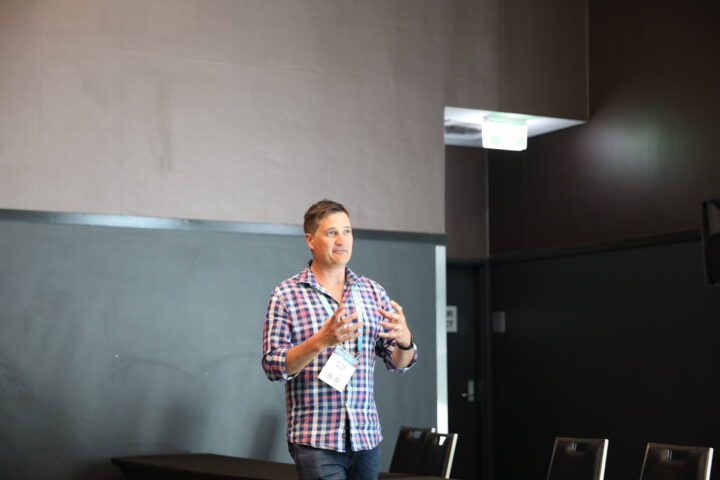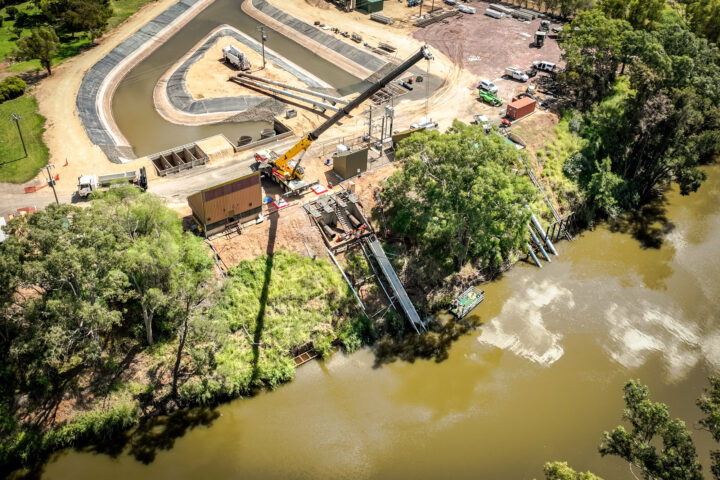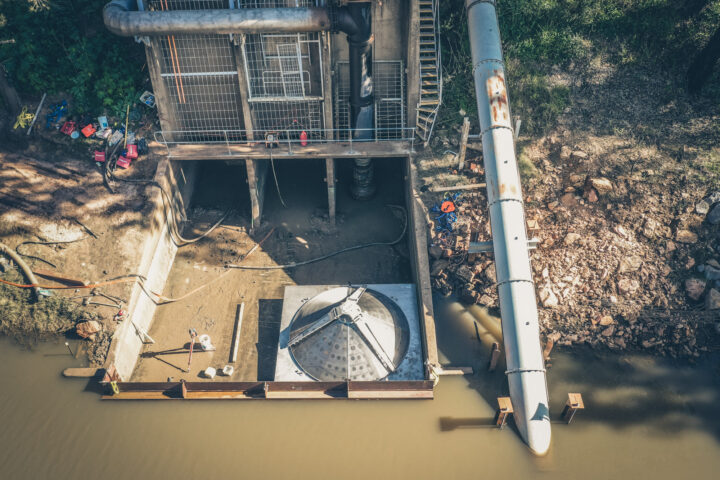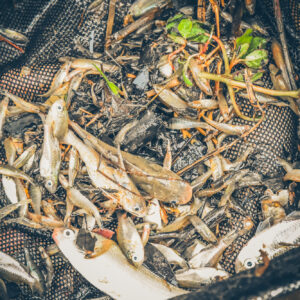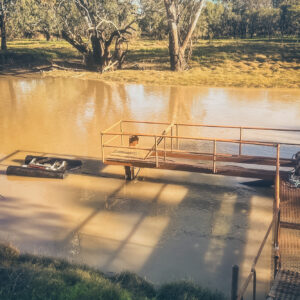The Case for Modern Fish Screens
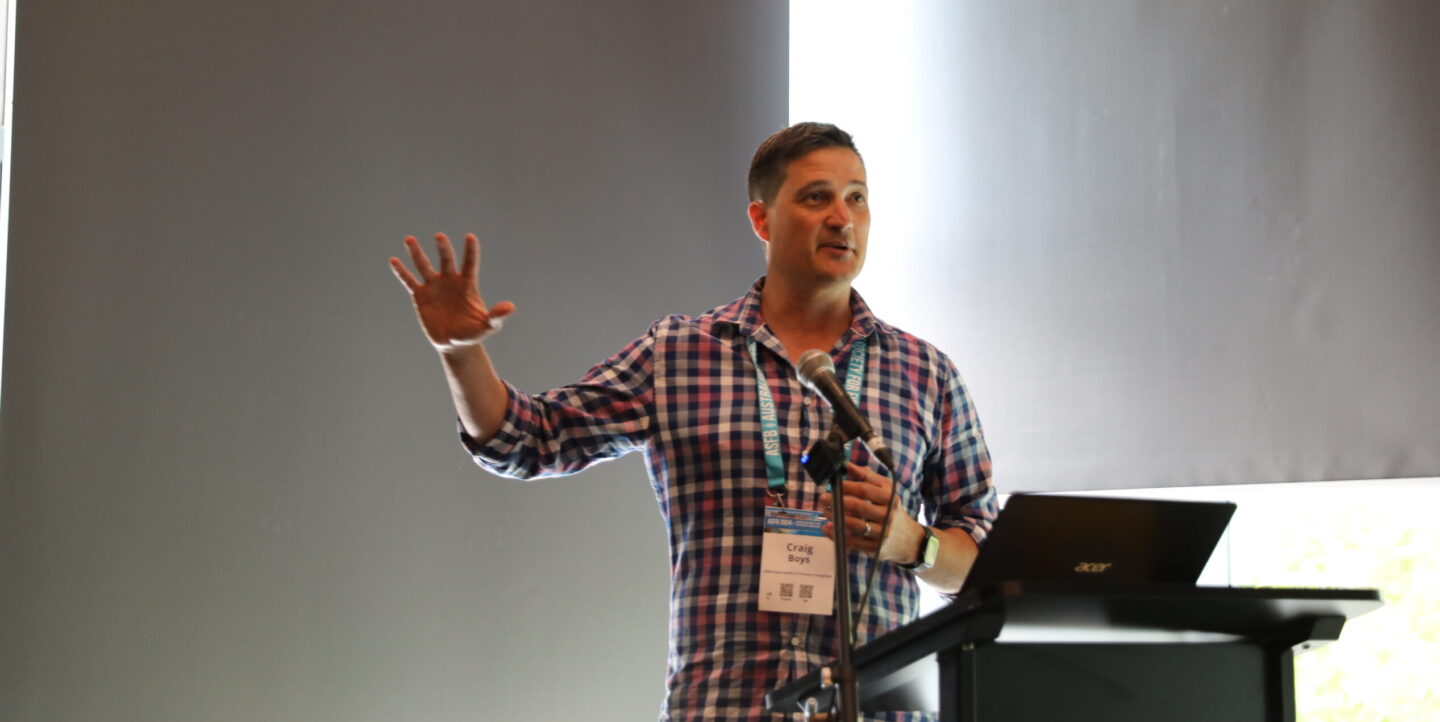
Australia’s rivers are home to unique native fish, but these ecosystems face significant challenges from water diversions.
As Craig Boys highlighted during his presentation at the 2024 Australia Fish Biology Society Conference, the diversion of river water for agriculture and other uses comes with a heavy cost: millions of native fish are being impacted annually. However, modern screens offer a practical solution to mitigate these losses, while lowering costs for water users.
The Scale of the Problem
Water diversions in Australia are substantial, with estimates suggesting that upwards of 80% of surface flows are redirected. In New South Wales alone, tens of thousands of active licenses and 4,500 pumps access water from rivers, affecting aquatic biodiversity.
The data paints a stark picture: studies estimate that nearly 100 million native fish are lost annually to unscreened or poorly screened water diversions.
This is not just an ecological problem: it compromises biodiversity, hinders river restoration efforts, and reduces fish populations available for recreational fishing. Historical records show that these losses have been a concern since the early 20th century.
Reports from the 1940s document massive fish losses, including millions of Murray cod, due to irrigation diversions in the Murrumbidgee region. So, the problem is not new, but it remains urgent.
“We’re not talking hundreds or thousands. Just in New South Wales, using a conservative estimate, we’re losing close to 100 million native fish every year at pumps.” – Craig Boys
Understanding Modern Fish Screens
Modern fish screens represent a transformative approach to river and fisheries management. Unlike traditional trash racks and mesh screens, which are often ineffective, these screens incorporate advanced designs to minimise fish entrainment.
By altering the hydraulics at water diversion points, modern screens slow water velocity to speeds that fish can easily swim away from, reducing suction from 1-3 metres per second to less than 0.1 metres per second.
These screens are made with finer mesh – sometimes as fine as 50 microns – and larger surface areas, preventing both fish and debris from being drawn into pumps while maintaining the required water flow for users.
The benefits are many fold.
- Fish protection: Significant reductions in fish mortality at diversion points.
- Improved water quality: Reduced debris in irrigation systems, lowering maintenance costs for farmers.
- Biodiversity preservation: Enhanced survival rates of aquatic fauna such as shrimp, frogs and other organisms, supporting broader ecological health.
A Global Perspective
Australia’s fish screening initiatives are part of a broader global movement. The United States has been a leader in this field, implementing fish screens for nearly a century.
By studying international practices, Australian researchers and practitioners have gained valuable insights. For example, trips to the U.S. have revealed the importance of tailored designs to suit specific river conditions and water diversion requirements. This knowledge has been instrumental in advancing screening efforts in Australia.
Similarly, New Zealand’s decades-long experience with fish screening has provided critical lessons. Collaborative workshops between Australian and New Zealand experts have fostered the exchange of ideas and strategies. These sessions have highlighted the need for locally adapted solutions, reflecting the unique challenges of each region.
“This isn’t a contemporary issue. We’ve found evidence in Trove mentioning losses as far back as the 1920s, tied to the rise of industrial agriculture and irrigation.” – Craig Boys
Progress in Australia
Progress in Australia has been steadily increasing, as more water users become aware of the technology and begin to take action. Early efforts to advocate for screening often faced resistance due to a lack of understanding or perceived cost barriers. However, through persistent education and demonstration, the tide is turning.
The establishment of Fish Screens Australia, supported by partners like the New South Wales Recreational Fishing Trust, the Ian Potter Foundation, and the Fisheries Research and Development Corporation (FRDC), has been pivotal. This collaborative initiative is driving the adoption of modern fish screening technology and promoting its benefits to stakeholders across industries.
“It’s been a slow burn, but we’re awakening the ‘sleeping giant of river restoration’. The awareness and momentum around screening are growing.” – Craig Boys
Addressing Challenges
Despite the clear advantages, challenges remain in scaling-up the use of fish screens. Key issues include:
- Cost and feasibility: Ensuring that designs are both effective and affordable for widespread adoption.
- Engineering knowledge gaps: Bridging the divide between biological research and engineering expertise to develop practical solutions.
- Stakeholder collaboration: Engaging fishers, engineers, and farmers early in the design and implementation process to ensure buy-in and success.
- Social licence: Leveraging public support and awareness to drive policy changes and encourage adoption.
Workshops and masterclasses have proven useful for addressing these challenges. these forums facilitate knowledge-sharing and foster innovative solutions By bringing together biologists, engineers, and other stakeholders,. Discussions have included strategic implementation, design considerations, and the economic benefits of fish screens, ensuring that all aspects of the issue are addressed.
A Vision for the Future
The journey toward widespread adoption of modern fish screens in Australia is a marathon, not a sprint. However, the progress made to date – from increased awareness to collaborative workshops and pilot projects – is encouraging. As Craig aptly described it, the effort to promote fish screens is akin to “awakening the sleeping giant of river restoration.”
With continued investment in research, collaboration, and education, there is hope that Australia can lead the way in protecting its native fish populations.
Modern fish screens are not just a tool for conservation; they are a critical component of sustainable water management. By embracing this technology, Australia can ensure the long-term health of its rivers and the communities that depend on them.

